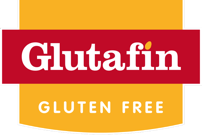
If you or someone you love has been recently diagnosed with coeliac disease, you could be eligible to receive gluten free foods on prescription. Simply select your country of residence, and, if you live in England, fill in your postcode to check if your area is prescribing.
Your country is prescribing gluten free foods*. Request your Glutafin Taster Box by clicking the button below to sign up.
* Please note: local policies are constantly updated, and issuing a prescription is at the discretion of your GP.

Diabetes is a common condition in which the body is unable to properly regulate the amount of glucose (sugar) in the blood.
Glucose is released following the digestion of starchy foods including bread, cereals, rice, potatoes and pasta, and also from sugary foods and drinks. Like coeliac disease, diabetes is a life-long condition with the focus of treatment being to control symptoms.
There are two main types of diabetes:
(Insulin dependent diabetes mellitus or IDDM)
Type 1 diabetes develops when the body is unable to produce any insulin, the hormone that regulates the level of glucose in the blood. This type of diabetes usually appears in people under the age of 40, often in childhood. It is treated with insulin, either by injection or pump and a healthy diet. Regular physical activity is also recommended.
Coeliac disease and type 1 diabetes are both autoimmune conditions. If you have an autoimmune condition, your genetic make-up makes you more susceptible to developing other autoimmune conditions. People with type 1 diabetes have a greater risk of developing a sensitivity to gluten. The Department of Health estimate that 2-10% of people with type 1 diabetes may also have coeliac disease. In the majority of cases, diabetes is diagnosed before coeliac disease.
(Non insulin dependent diabetes mellitus or NIDDM)
Type 2 diabetes develops when the body is still able to produce some insulin, although not enough to meet its needs, and/or when the insulin produced does not work properly.
People with type 2 diabetes have no greater risk than the general population of developing coeliac disease.
Lots of foods are naturally gluten free such as meat, eggs, fish, cheese, pulses, fruit and vegetables. There are also some cereal based products that are gluten free such as rice cakes and gluten free breakfast cereals.
The main changes you’ll need to make to your diet is to switch to gluten free bread, flour, pasta, biscuits and crackers. Glutafin offers a full range of these foods. Starchy foods help provide energy, vitamins, fibre, minerals and to help control blood glucose. Wherever possible choose wholegrain alternatives, such as brown rice, brown or fibre gluten free bread. This is because a gluten free diet usually lacks in fibre.
Living with diabetes and coeliac disease guide